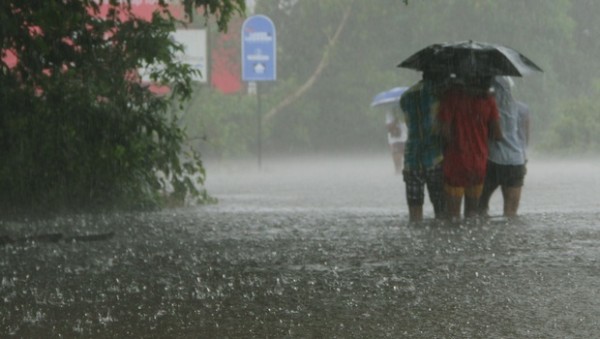One of the most cheering news this morning was undoubtedly the fact that Monsoons have hit the Kerala coast and well before the June 9 deadline got past. In a country that is reeling under the impact of two below normal monsoon seasons and which is nearly 70% dependent on monsoons for its water supply, this is the type of news that calls for celebration all round. The parched agricultural lands, the almost dry reservoirs, the ever receding ground water level, the rivers that are drying up are all screaming for Monsoons aloud.
To make matters even better, the IMD forecasts above normal rainfall in the country this year. The prediction is 104-110% of long period average (LPA) – for the southwest monsoon season from June to September this year. This is indeed heartening news for our country. As I mentioned earlier, the south west monsoon delivers nearly 70 percent of rains that Iwe need to water farms, recharge reservoirs and aquifers and other bulk water requirements. Nearly half of India’s farmlands depend on this annual June-September rains to grow a number of crops in the absence of a disciplined and regimented irrigation facility.
But even if we assume the monsoon rains this year will be well on target and also evenly distribute to address most of the country’s water woes at least temporarily, the bigger problem is the fact that water scarcity in our country is a glaring concern and measures in terms of long-term sustainable ones are very few. CWC data indicates that reservoirs in India’s eastern and central regions have the most water, with levels at 44% and 36% respectively, of capacity; while levels in the south is at 20%, west @ 26% and north at 27% respectively. This level is well below the 10-year average for water levels is 38.5%.
The Krishna river basin in peninsular India is particularly short of water, affecting Maharashtra, Karnataka, Telangana and Andhra Pradesh. The Indus, Tapi, Mahi, Cauvery and Godavari basins are also deficient. Parts of Aurangabad district in Maharashtra is seeing its worst drought in a century and a huge state like Maharashtra has only 1% water left of its 2.17-BCM capacity.
The need of the hour is not just to breathe a sigh of relief and celebrate the monsoon’s arrival but some serious introspection and measures are required to store and distribute the water in a constructive and long-term manner. Perhaps it is time we looked at ways of depending lesser on the Monsoon rains for our water supply and used the available water judiciously.



Leave a reply